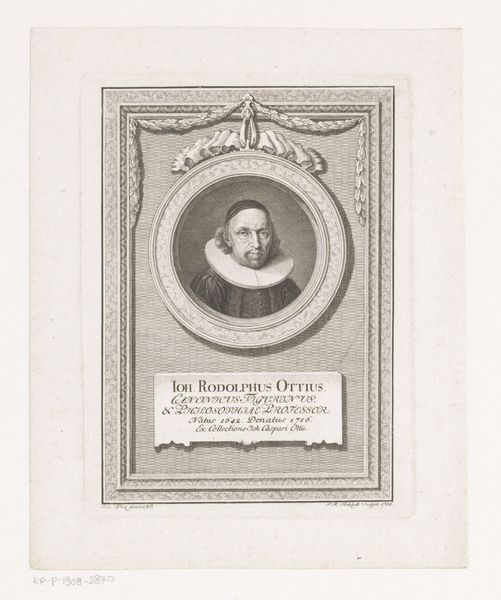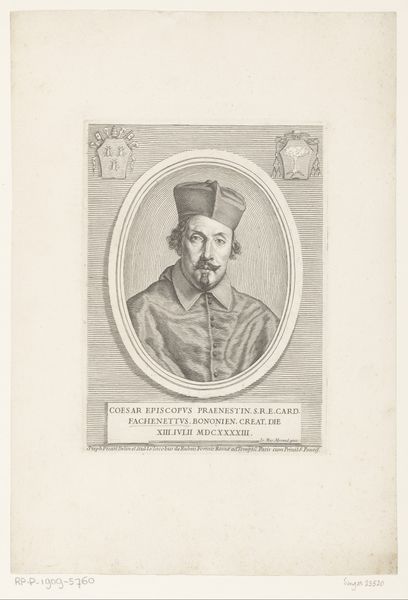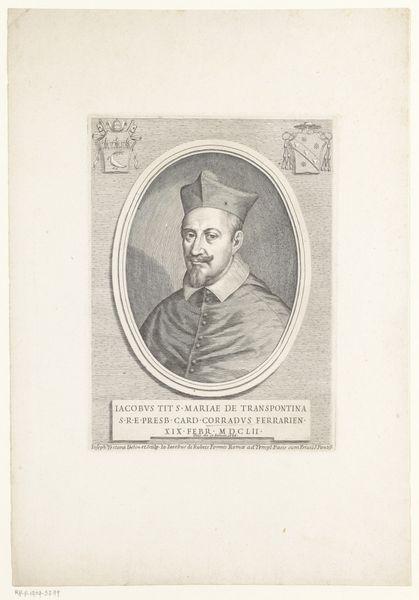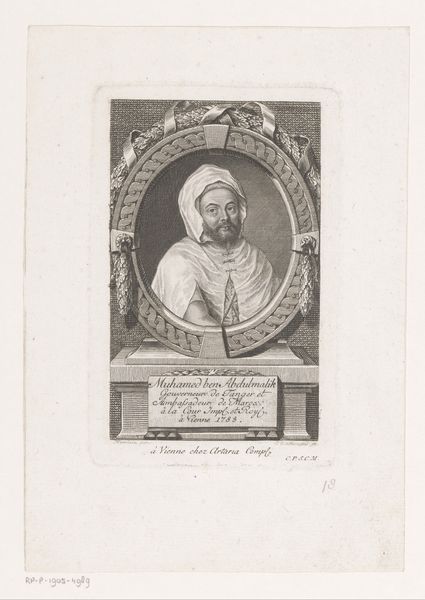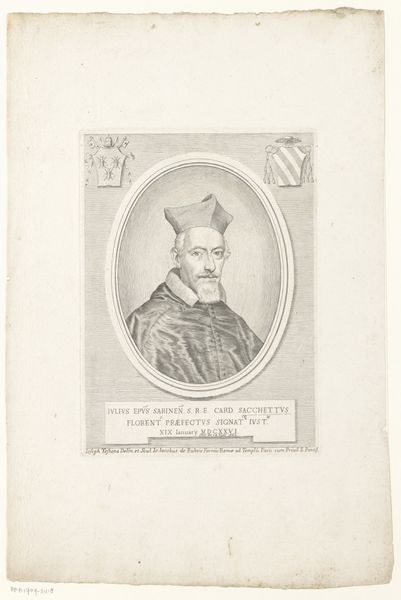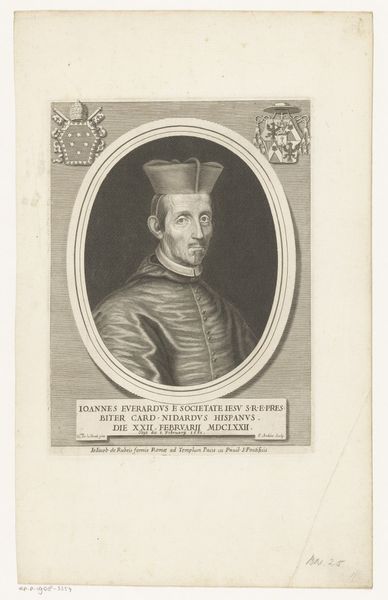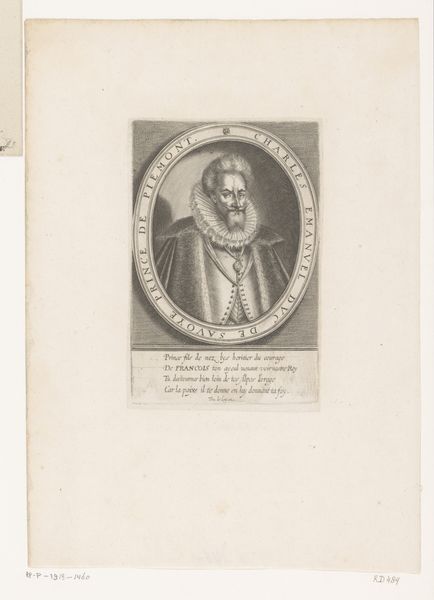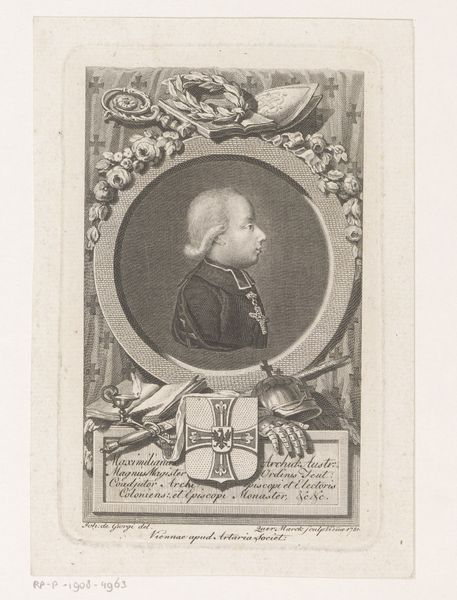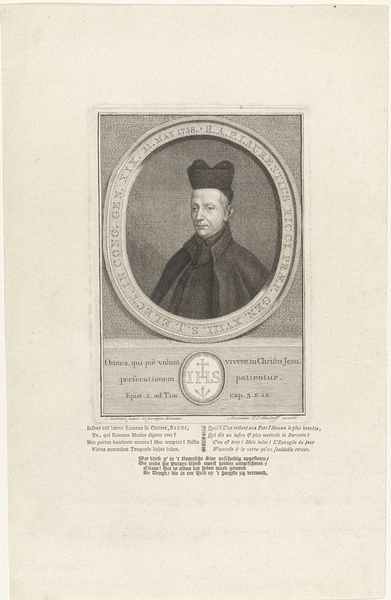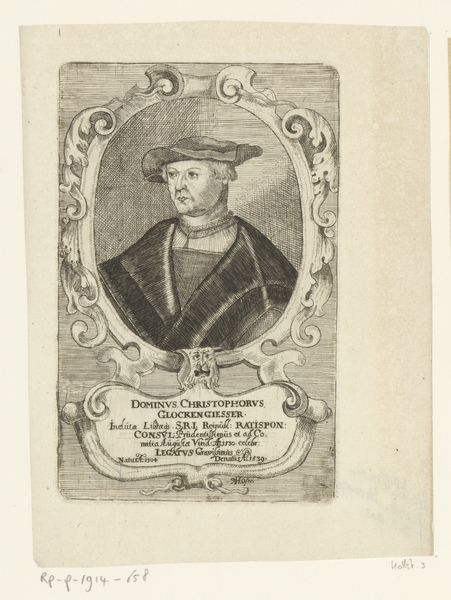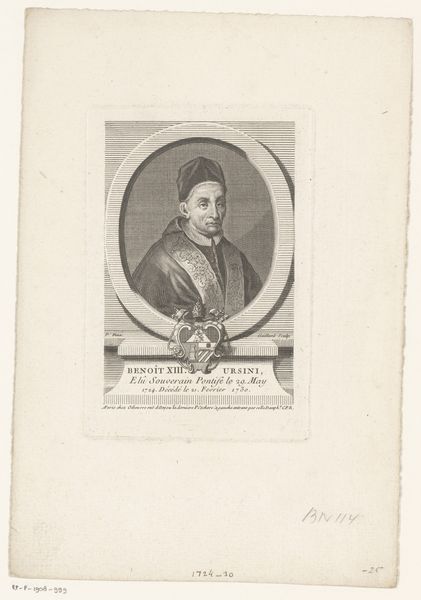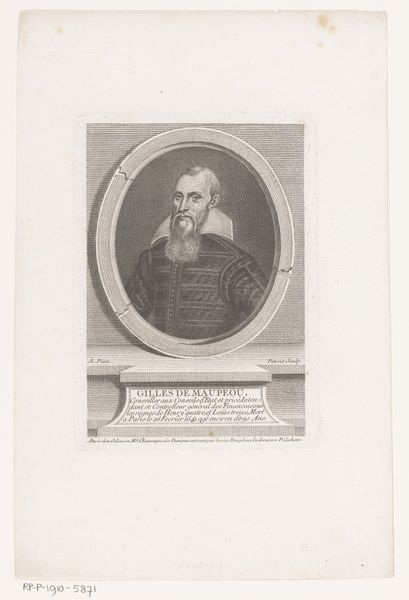
Dimensions: height 170 mm, width 117 mm
Copyright: Rijks Museum: Open Domain
Editor: This is a print from 1786, titled "Portret van Heinrich Ott," created by Johann Rudolph Holzhalb using engraving. It features a portrait of a man in a circular frame. What strikes me is the contrast between the detailed rendering of the man's face and the more patterned background and decorative frame surrounding it. What stands out to you in this work? Curator: I'm particularly interested in the production process itself. Consider the labour involved in creating such an intricate engraving. The artist’s hand meticulously etching lines onto a metal plate. It highlights the shift toward more readily reproduced images. It wasn't just about capturing likeness; it was about dissemination, about making this image available for consumption by a wider audience. What was the intended audience for such prints? And how did their consumption patterns influence the art market of the time? Editor: That’s a great point. I hadn't thought about the production and distribution aspects. So, instead of focusing solely on Holzhalb's artistic skill, you're emphasizing the material and social context. The print almost becomes a commodity rather than just a portrait? Curator: Exactly! And think about the materials: the paper, the ink, the metal plate. All were elements of industry and commerce at that time. These materials have their own stories to tell. The very act of creating and circulating these prints played a role in constructing and reinforcing social hierarchies, systems of labor and consumption, making this work rich. Editor: It’s fascinating to consider this artwork in that context. It really opens up new avenues for interpretation. Thanks for sharing your perspective! Curator: And thank you for guiding the discussion in that direction, this portrait unveils the intricate link between materials, processes, and society during the late 18th century.
Comments
No comments
Be the first to comment and join the conversation on the ultimate creative platform.
